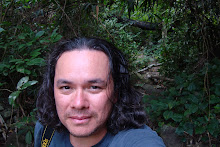Onogawa, Japan: This town is located just at the northern edge of Miyagi Prefecture. The name Onagawa means "Female/Feminine River." Here in this view was once a neighborhood. It was home to many people. It was where families lived and children grew up. Then with the rage of a tsunami, it was broken and swept to pieces. Here you can see foundations, battered houses, crushed cars, and even a train that was ripped apart and moved up a stairway of a cemetery. The rail car smashed family grave sites and rested just at the top of the hill. What you are seeing is where many people lost their lives. It is where the lives of children was changed forever. What you are seeing is the aftermath of unimaginable devastation which is as of now continuing to do damage. The punishment here has been relentless. The vantage point from which I shot this too is tragic as it was taken from Onagawa Elementary School. When the earth quake struck in the mid-afternoon the children in the school were sent from classes to the safety in the clear and open spaces of the sports field. Since it was located atop a hill, the area was dedicated as a safety zone. The children stood outside in shock from the quake that lasted over 5 minutes. When the rumbling and shaking eventually stops there's usually a lull of silence. A routine of roll calls and quick building inspections will likely constitute being led back to class. On this day, it was different. Although the quakes shook and rattled the town; most of the structures and buildings remained intact and had survived with little damage. Usually after earthquakes, people feel relived, get over the initial scare, and continue with what they had been doing before the interruptions.. Not today, today following the shakes tsunami warnings blared on the public announcement system. With it followed voice messages giving stern warnings and encouraging locals to head to safety. The tide receded at the seaside and was pulled into the bulging sea. Then a wall of water and white capped breakers was seen heading into shore. Soon it crashed and continued as a wash of cold dark sea cascading over the sea barriers. The wave moved and crushed everything it its path and formed wall of debris. Much like e a juggernaut; it destroyed everything in its path. When the tsunami came, it pushed a path of destruction with it. Then it pulled back to sea pulling a path of destruction with it as well. Then it came back to do more of the same. Reports indicated that it came and left 3 times. Each time it brutalized this area. As everything in this world was being destroyed the children stood and watched from the hilltop. Everything they knew as family and home was taken right in front of them. Most if not all here had lost their mothers and fathers. As of now due to the massive scale of this disaster, the children here are still kept at the school due to limited resources in logistics, support, and caretakers. Although the tsunami withdrew back to the sea a month ago, it is still causing great pain and harm to this place. Because of this what you see in this view is not an aftermath.
Onagawa Disaster Area

























